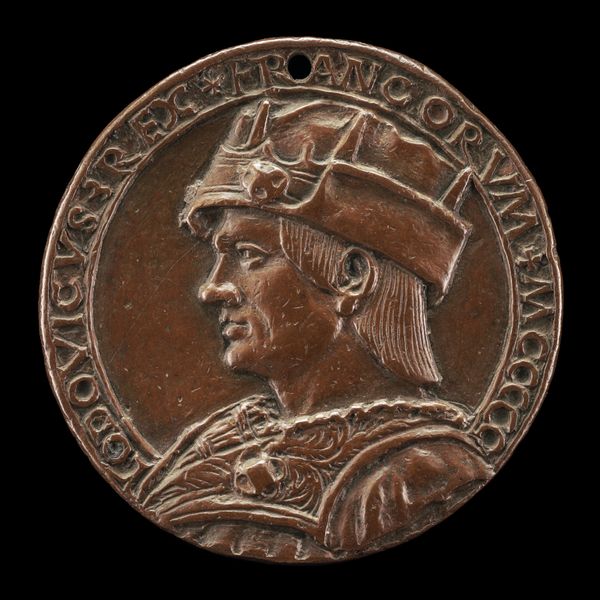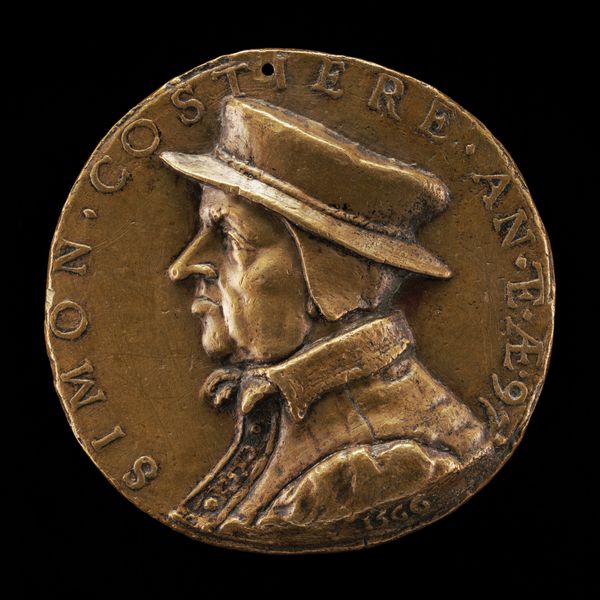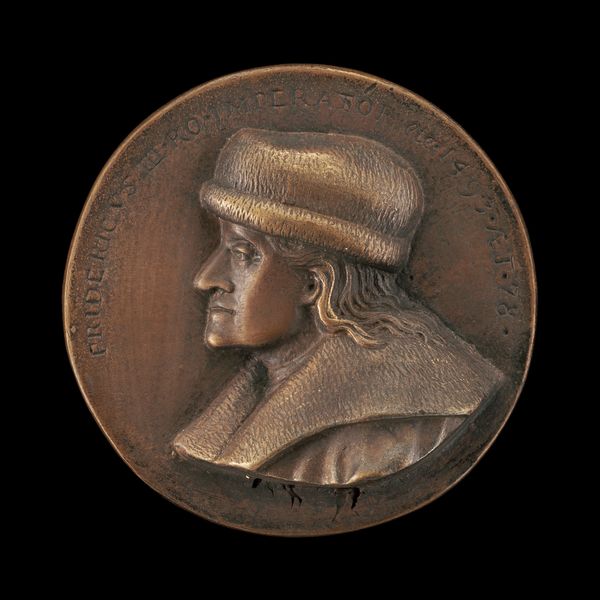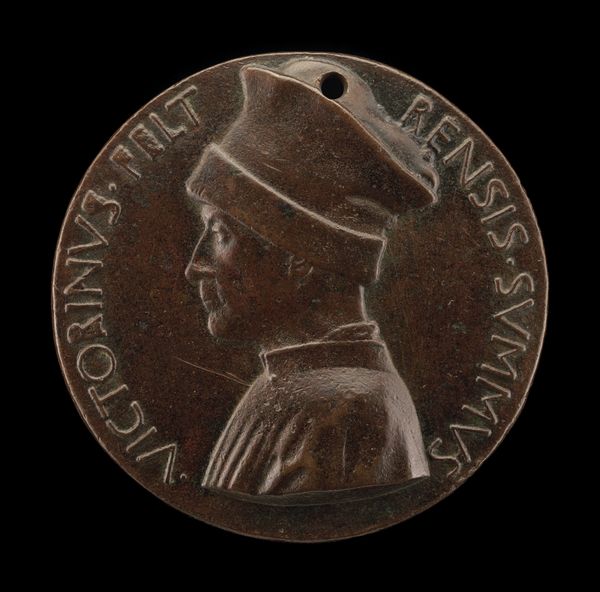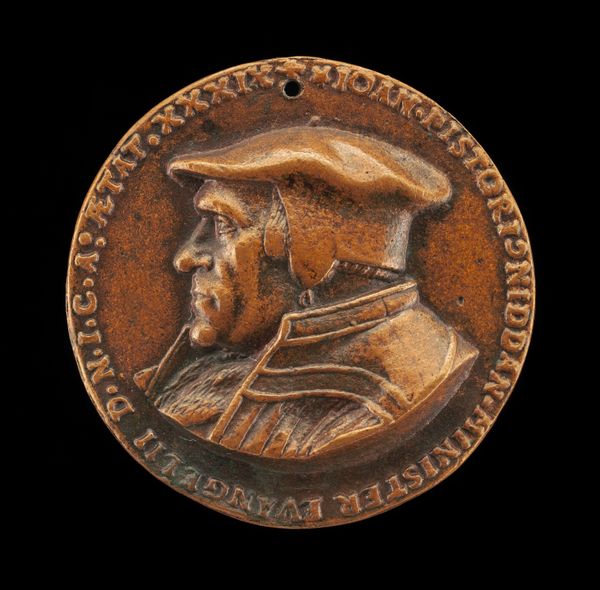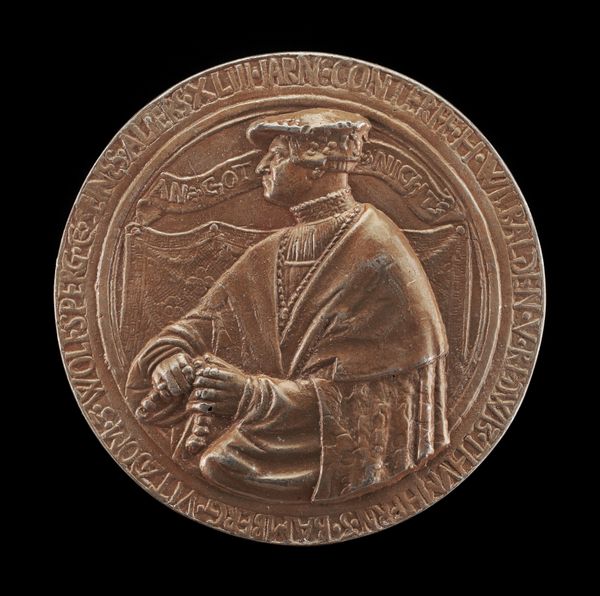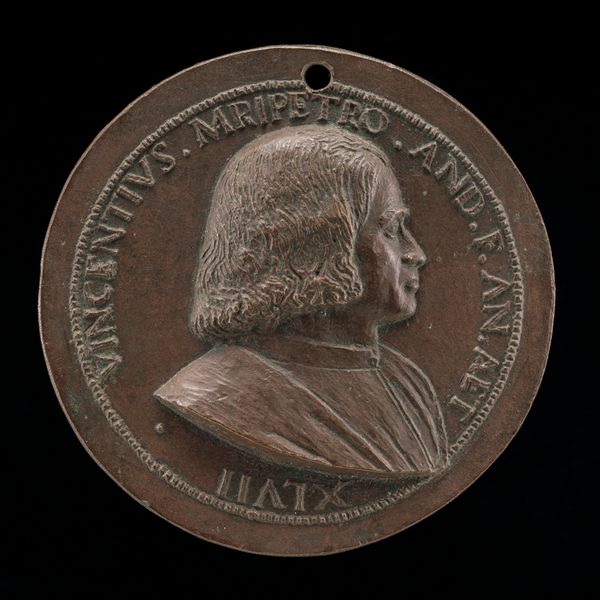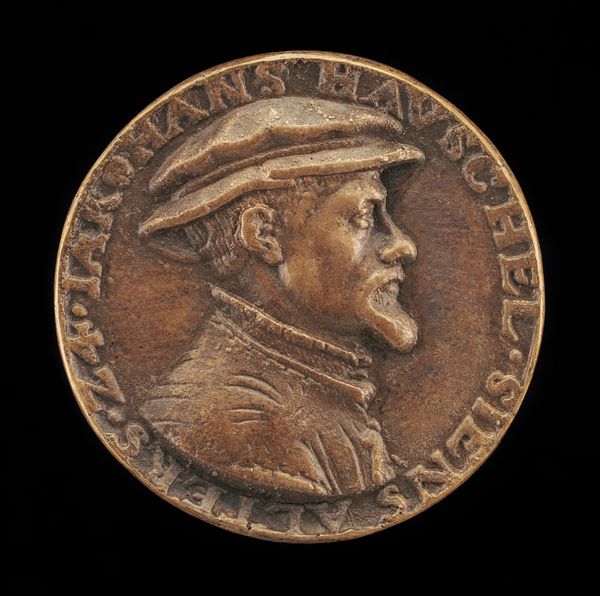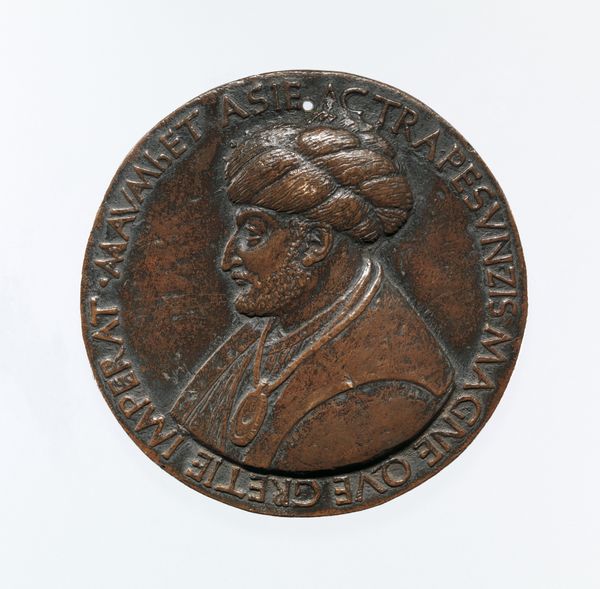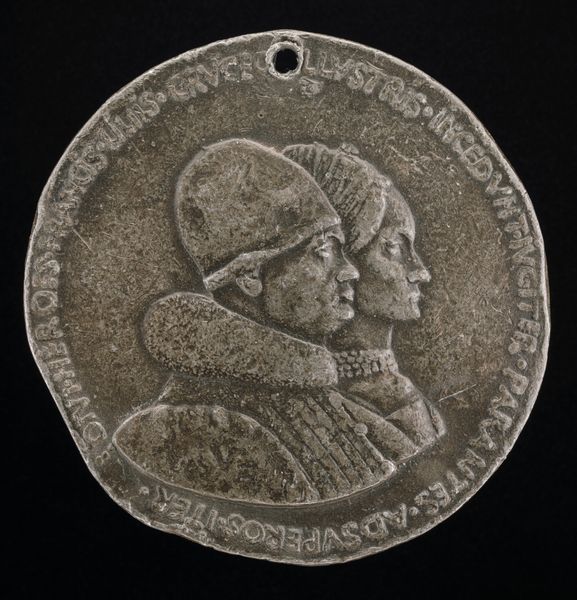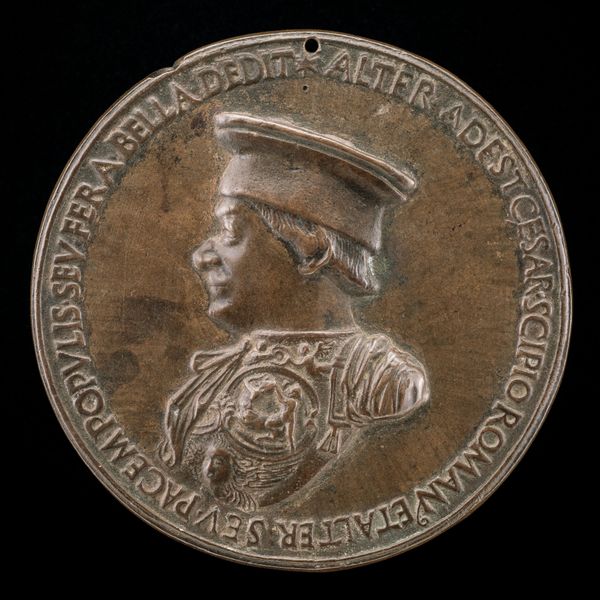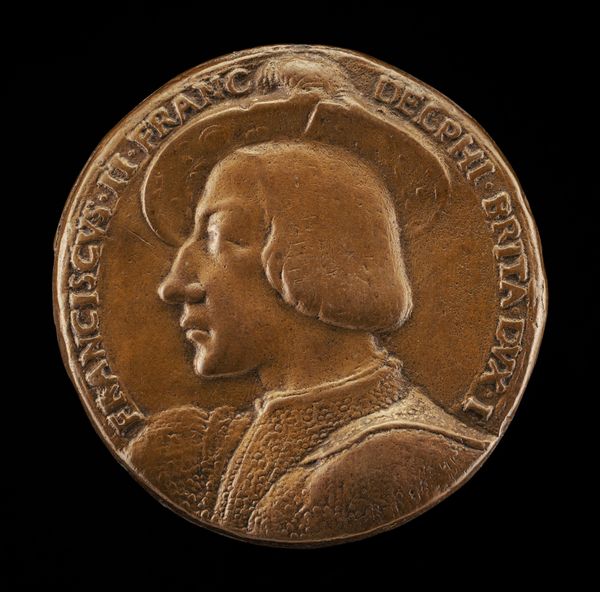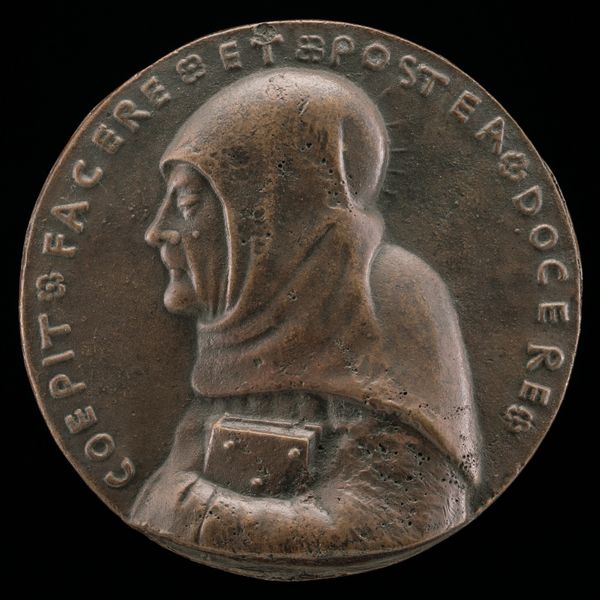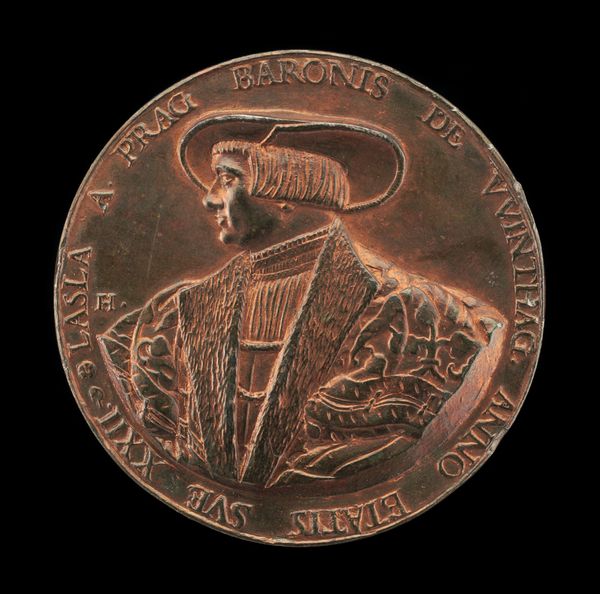![Frederick III, 1415-1493, Holy Roman Emperor 1452 [obverse] by Bertoldo di Giovanni](/_next/image?url=https%3A%2F%2Fd2w8kbdekdi1gv.cloudfront.net%2FeyJidWNrZXQiOiAiYXJ0ZXJhLWltYWdlcy1idWNrZXQiLCAia2V5IjogImFydHdvcmtzLzhkNWIzNzU5LWY3MWYtNDBlNS1hZTFkLTU5NzliYjEzOWNjNy84ZDViMzc1OS1mNzFmLTQwZTUtYWUxZC01OTc5YmIxMzljYzdfZnVsbC5qcGciLCAiZWRpdHMiOiB7InJlc2l6ZSI6IHsid2lkdGgiOiAxOTIwLCAiaGVpZ2h0IjogMTkyMCwgImZpdCI6ICJpbnNpZGUifX19&w=3840&q=75)
Frederick III, 1415-1493, Holy Roman Emperor 1452 [obverse] 1468 - 1469
0:00
0:00
metal, bronze
#
portrait
#
medal
#
metal
#
bronze
#
italian-renaissance
Dimensions: overall (diameter): 5.63 cm (2 3/16 in.) gross weight: 63.49 gr (0.14 lb.) axis: 1:00
Copyright: National Gallery of Art: CC0 1.0
Editor: Here we have a bronze medal, "Frederick III, Holy Roman Emperor" made by Bertoldo di Giovanni around 1468. I’m struck by how tactile it seems, like you could feel the cool metal in your palm. What can you tell us about it? Curator: As a material object, this medal presents an intriguing intersection of power, labor, and value. Think about bronze: a durable, relatively common material. Casting it requires skilled labor, and producing multiples inherently makes it accessible. Now, what statement does it make about power, when a Holy Roman Emperor utilizes a medium typically associated with commerce? Editor: That's a good point. So the very choice of bronze challenges our perception of Frederick's authority? Curator: Precisely! He's deliberately engaging with a broader audience, using a medium that isn’t exclusively for the elite. Consider too, how medals circulated – like currency almost – but bearing his image. It’s about controlling not just territory, but also visibility and the flow of information, using production to amplify reach. How does this mass-producible form of portraiture shift traditional notions of aristocratic representation? Editor: That makes me wonder about the specific choices, like his clothes or the inscription - do you think that plays into this tension too? Curator: Absolutely. Details like clothing reflect choices in production, implying decisions that would be easily reproduced but visually communicate imperial identity. Look, too, at the placement of the lettering. All this impacts our material reading. By thinking about it this way, it can become more about economics and the ways in which the production methods alter our reading of this object and the intentions of the person commissioning it. Editor: That’s fascinating! It makes me think about how the production itself is part of the artwork’s statement, not just the image. Curator: Indeed. And understanding its materiality opens up crucial perspectives on the era's power structures.
Comments
No comments
Be the first to comment and join the conversation on the ultimate creative platform.
